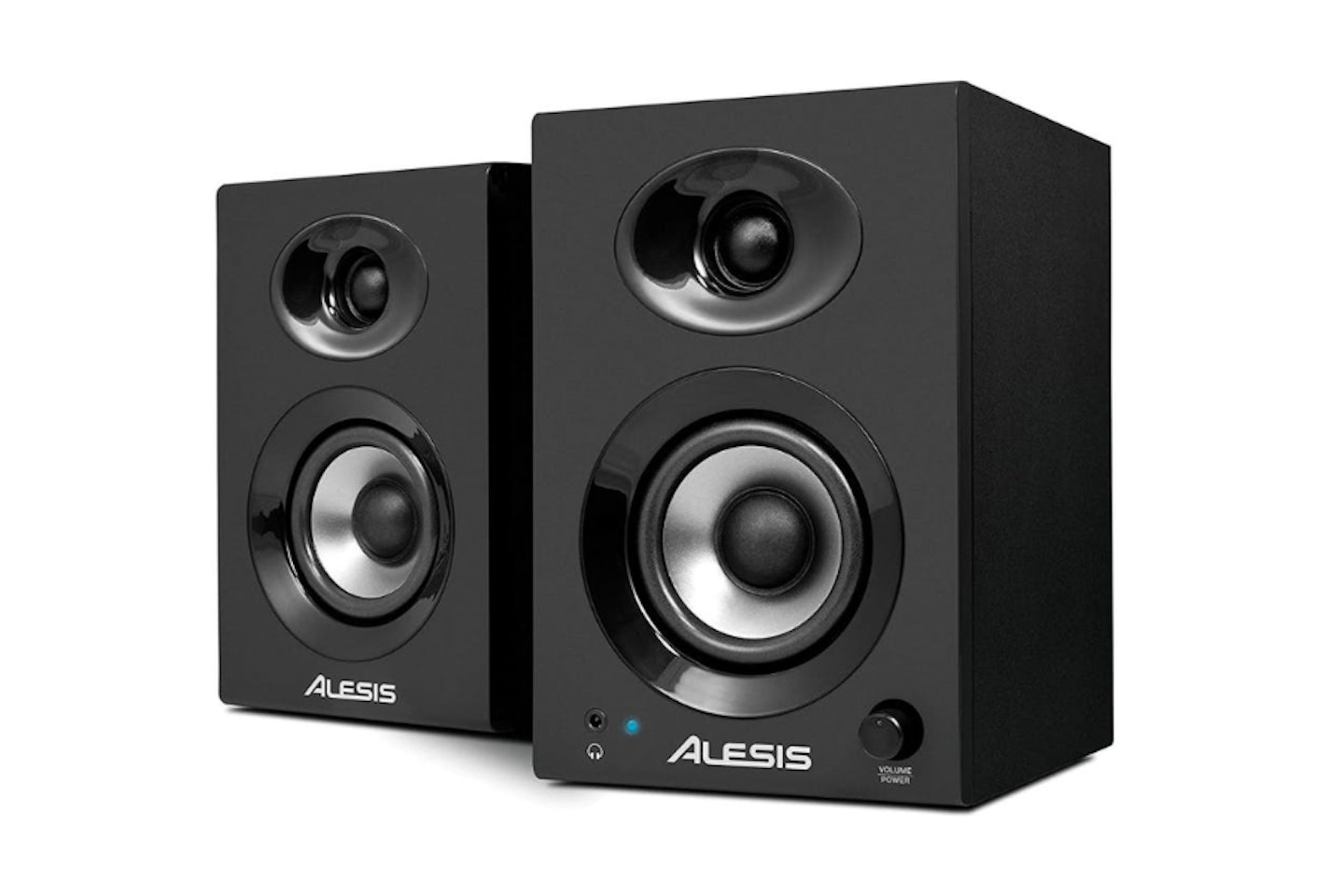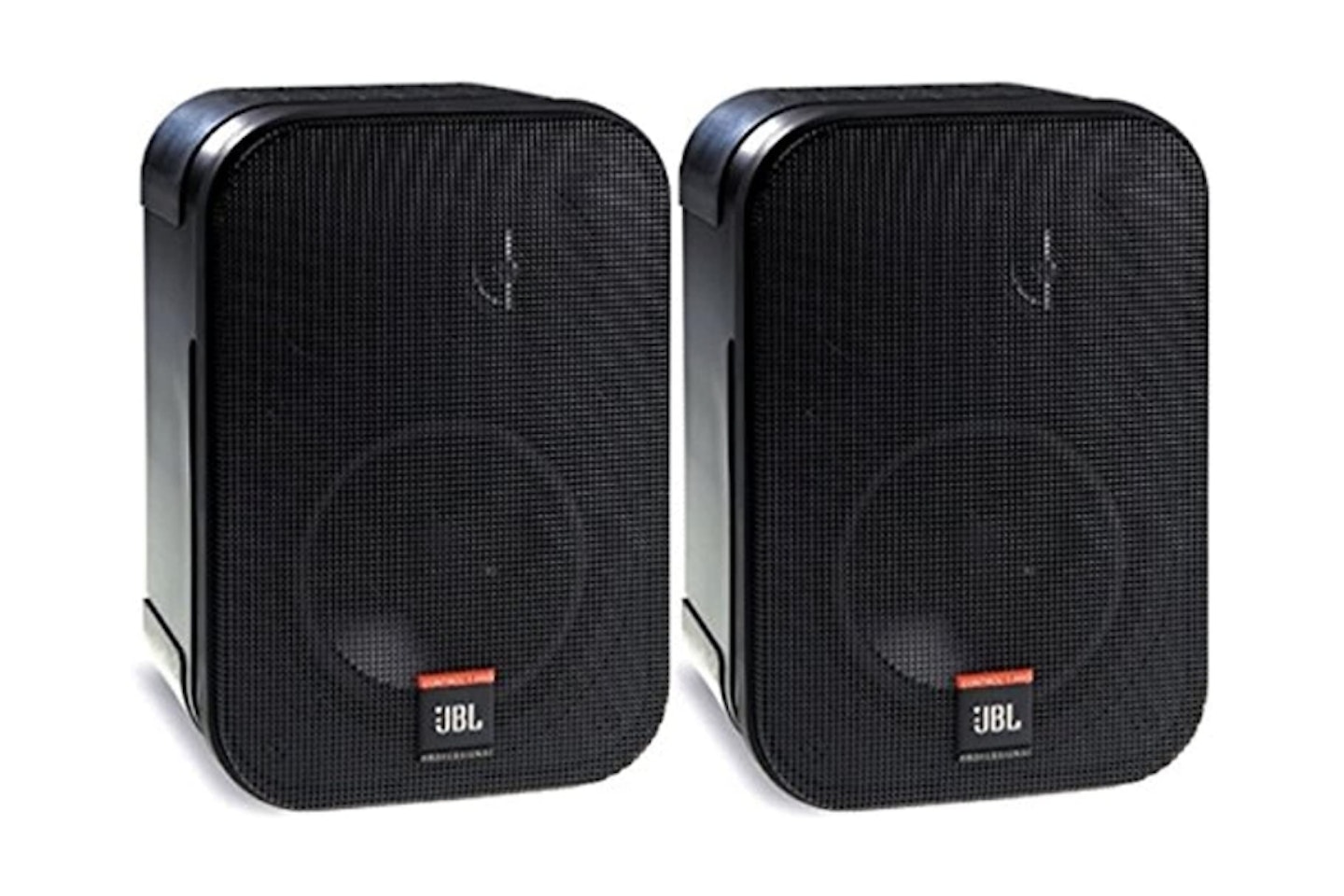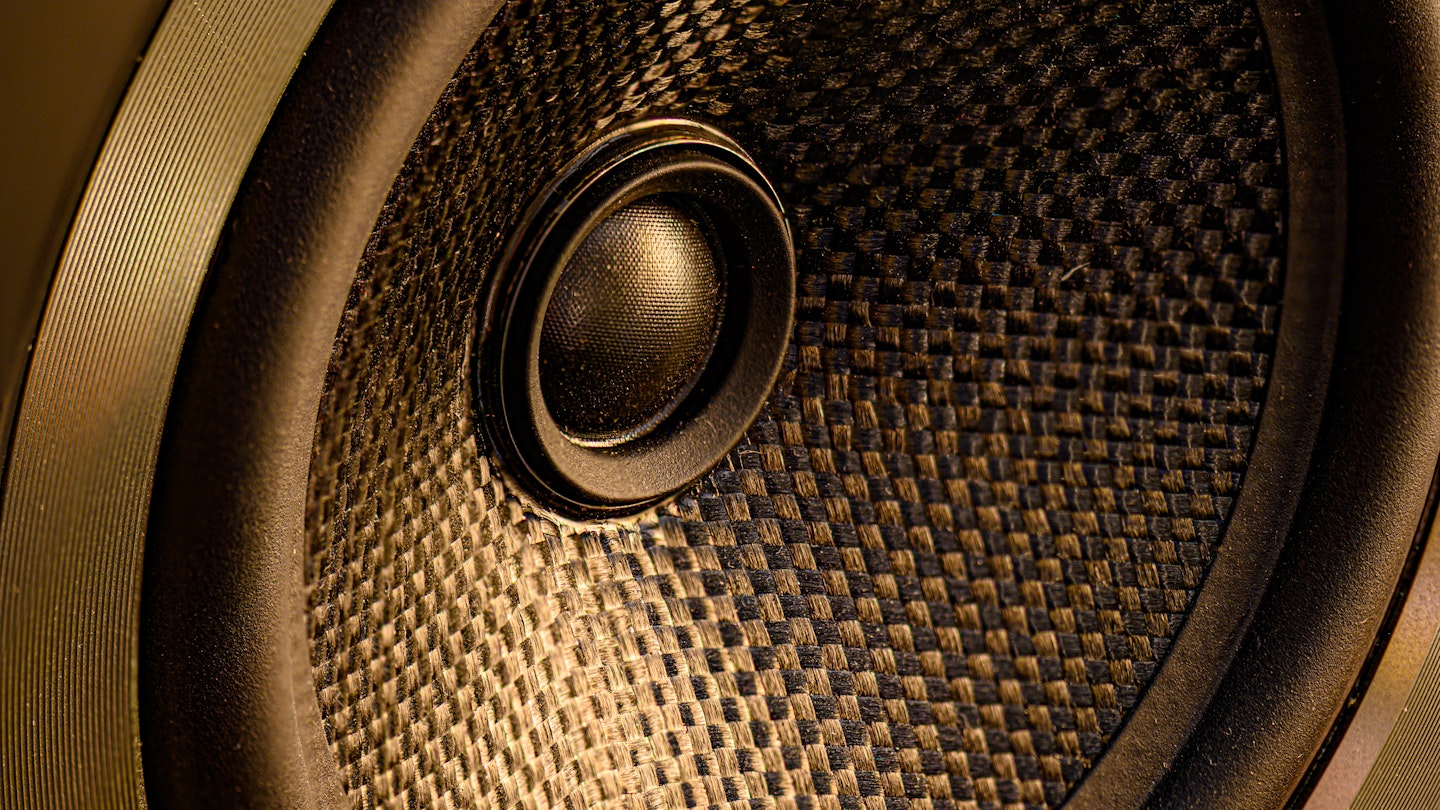Want to boost your audio experience without spending too much? You can't do much better than finding a set of the best budget studio monitors. Studio monitors are primarily used for recording and editing music due to their enhanced quality and accuracy. Plus, because they sound great, they can make excellent hi-fi speakers for anyone simply looking to improve their listening experience.
It's easy to think you should spend hundreds on a single studio monitor, but a cheaper pair could be more than up to the job. There are plenty of good-value studio monitor speakers available online. However, that also means it can be hard to hunt down the perfect set. To make things more challenging, they're similar to the ever-popular bookshelf speaker. But, just because they're the same size doesn't mean they'll do the same job. Thankfully, we've explored the options for you and found the very best of the bunch.
Best budget studio monitors shortlist
• Best budget studio monitor set: Alesis Elevate 3 MKII - view offer on Amazon UK
• Best budget studio monitor for musicians: M-Audio BX4 - view offer on Amazon UK**
• Best small studio monitors:** JBL C1PRO Control 1 - view offer on Amazon UK**
• Best single studio monitor:** Kali Audio LP-6 - view offer on Amazon UK
You may be asking: why bother to invest in proper studio-grade monitors? After all, aren't they just small bookshelf-style things, like the flashy-looking PC speakers you can find at half the price?
The short answer to the latter is an unsurprising no. If you're spending any of your time in a home studio or professional production environment you'll know that the right monitor speakers are invaluable. They can be the difference between creating indistinct vocals and overcooked mids; and something that reflects your intentions that you'd be proud to share. However, all of this high-end performance doesn't have to come with an unattainable price tag. The audio experts at What's The Best are here to help with that.
The best budget studio monitors
Best budget studio monitor set

Designed for home use, this dual setup from Alesis will be perfect for beginners wanting to take their enjoyment of music to the next level. A 20W maximum output isn't spectacular, but the sound quality will be rich. The wooden frame is a nice quality touch whilst also helping your music sound sharper too.
Another benefit here is the size - the Elevate 3's are small enough to move around if you need to but large enough to be truly useful for mixing tracks on the move.
Pros
- Great sound quality
- Solid build
- Neat size
Cons
- For more power, you'll need an extra subwoofer
| Output: | 10 W per channel output power; 20 W total |
| Drivers: | 3-inch low-frequency driver, 1-inch silk dome tweeter |
| Frequency response: | 55Hz - 20kHz |
| Impedance: | 8 ohm |
| Dimensions: | 15 x 12.9 x 19.2 cm |
| Weight: | 3kg |
- Customer review: "Before purchasing these I did a lot of research both online and physically and for the price of these Alesis Elevate 5‘s I think you’d struggle to find another pair of active speakers that come anywhere near close to the sound performance of these.
"They are slightly on the larger side compared to others but that, along with the forward-facing bass ports, only serves to help produce a very rich and detailed sound from these speakers that give out enough volume to annoy the neighbours if you so wish. Whilst there are definitely better studio monitor speakers out there (for quadruple the price), for home use these are perfect."
Best budget studio monitor for musicians

A solid option for anyone interested in making music, the M-Audio BX4 offers excellent quality for recording and editing while also having several different inputs for different equipment. You can even plug your phone straight into it. These are aimed at music and media production set-ups but also will be invaluable for any live studio environment for work with live streams and podcasting.
There's also an array of controls on the rear panel for everything from high and low gain, and a setting to toggle which speaker's volume control is the active one. All in all, a most impressive set of monitors.
Pros
- Multiple inputs make this monitor versatile
- Professional look and feel
- Powerful and exceptionally balanced sound
- Drivers are black Kevlar
Cons
- No subwoofer-out port
| Output: | 120w |
| Drivers: | 4.5” Black Kevlar woofers and 1” natural silk dome tweeters |
| Frequency response: | 69 Hz – 22 kHz |
| Impedance: | unknown |
| Dimensions: | 156 x 175 x 225 mm |
| Weight: | 4.46 kg |
- Customer review: "I bought these for my home studio setup, being new to music production I was not sure what to expect. I tried them with a variety of sound sources, tv, phone and laptop and was impressed with their clarity across the range, clear top, middle and bottom.
"They are not entertainment speakers so don't boost the bass, the ranges can be boosted via an equaliser otherwise the sound is fairly neutral. Depending on where you live, 120w can be loud enough to annoy your neighbours while I have not found any deterioration in sound quality at higher volumes. Whatever you use these speakers for, they are fantastic value for money and would definitely purchase them again."
Best small studio monitors

JBL have a good reputation when it comes to sound quality and this pair of small studio monitors is no different. The big plus point for these speakers is their small size but are still powerful and sound great. Weighing less than 5kg also makes them the most portable option here, perfect for a house party.
These monitors are certainly designed as such, they have all of the trappings and specifications that belong in a small studio. But, they're also fantastic all-rounders, and ideal for filling in gaps in your surround sound setup or as Dolby Atmos satellites.
Pros
- Compact design makes it perfect for smaller spaces
- Good sound quality
- Versatile
Cons
- Not the most attractive design
| Output: | 150w |
| Drivers: | 5.25" low-frequency driver, 0.75" dome tweeter |
| Frequency range: | 80hz - 20 Khz |
| Impedance: | 4 ohms |
| Dimensions: | 2353mm x 159mm x 143mm |
| Weight: | 1.8kg |
- Customer review: " I use them as part of a home cinema Dolby ATMOS surround setup (one pair as front heights, and the other pair as surround speakers). They work perfectly for that. They're also very durable. The sound quality is good as surround speakers.
"I couldn't comment on how they are as front speakers or as a stereo pair in a basic stereo setup. If you've got some JBL speakers already (as front & centre speakers). These Control One's are great to complement them as surround speakers... I bet they'd be great in a bigger room too that has several rows of surround/height speakers."
Best single studio monitor
If you're in the market for something that will be able to cut it with professional equipment then this single studio monitor from Kali is what you're looking for. It may only be a single unit and the heaviest option at 7kg but its sound quality is excellent. With a maximum output of 80W, it's easily the most powerful option available on a budget.
You can expect excellent range and performance from an LP-6, and as the only single speaker option in our list that quality is reflected in the price. The only downside of getting one of these is that you'll probably want to buy another one.
Pros
- High specification across the board
- Solid build
- Powerful output
Cons
- Weight means wall mounting will require investing in decent brackets
- You'll want to buy two for stereo mixing
| Output: | 80w |
| Drivers: | 6.5-Inch Optimized Paper, 1-Inch Textile Dome |
| Frequency range: | 47 Hz - 21 kHz |
| Impedance: | Unknown |
| Dimensions: | 22.2 x 26 x 36.2 cm |
| Weight: | 7.05kg |
- Customer review: "I couldn't be happier with how these sound, even in my small "bedroom" setup! I don't have much room OR desk space, but these can be tamed with the switches on the back so you can have them pretty close to the wall and sitting on the desk (I'd still recommend you get some pads for obvious reasons).
"The front-facing ports really help a lot in this kind of situation too! As soon as I gave them a test drive I was in love with music all over again. Shout out to the guys at Kali Audio too, they do a great job behind the scenes and answered my questions within minutes."
Best Bluetooth-enabled budget studio monitor
Edifier makes some excellent speakers and this studio monitor is no different. Despite only having a 24W maximum output, it is still an excellent-sounding set, thanks in part to the use of ceramic paper which creates a clear bass response. Bluetooth connectivity is an added bonus, especially as two devices can be connected wirelessly at once.
The rear panel is cleanly laid-out, with knobs for volume and bass levels. There are also two line-in ports for added flexibility.
Pros
- Bluetooth enabled
- Excellent all-round response and controls
Cons
- Looks are a bit of an acquired taste
- Bass can be lacking for some
| Output: | 24w |
| Drivers: | 4-inch woofer drivers and 3/4-inch silk-diaphragm tweeter drivers |
| Frequency response: | 70Hz to 20KHz. |
| Impedance: | 4 ohm |
| Dimensions: | 15D x 16.1W x 22.8H centimetres |
| Weight: | 5.4 Kg |
- Customer review: "Really good value. Overall, a decent balance and a decent-sounding pair of speakers. Bought to replace a set of 2.1 Logitech speakers which were bass heavy. These have a much more balanced and clear sound and are REALLY loud. Have them on the lowest volume with my TV audio turned down.
"Sound good at most volumes, start to sound slightly distorted at the highest volumes, however, this is more likely down to my source, and those volumes are way too loud to listen to on a regular basis."
Best budget studio monitors: Buyer's guide
Powered versus unpowered budget studio monitors
There are two different types of studio monitors: powered and unpowered. Powered examples plug into a socket to power the internal amp circuitry. Whereas unpowered (also known as passive studio monitors) have their incoming audio signals boosted by the connected specialist or hi-fi amplifier. Powered studio monitors tend to have varying levels of clarity due to differences in built-in amplifier circuitry. We think that unpowered sounds clearer. It will also keep things simple where any serious mixing or playback for work purposes is concerned. At the end of the day, however, both will provide good sound quality and it's all down to your preference.
Frequently asked questions:
Can I use budget studio monitors as regular speakers?
Studio monitors can be used as normal speakers for a hi-fi or PC system. They also carry all of the usual speaker connection types that you'd find on regular hi-fi kit. But, there is one rather large limitation with some monitor speakers: the width of the sound. They're designed for monitoring sound from a mixing desk or audio workstation. The sound can be more directionally focussed. This means that, if you're using them as normal speakers, you may notice a variation in sound quality based on your position. However, for the most part, this isn't really noticeable by anyone other than a sound engineer or audiophile. If you can be in a relatively static position then monitors will sound even better than normal speakers. So, don't let this feature put you off using them; especially if you're on a budget.
Do studio monitors sound better than regular speakers?
They often do, but as you'd expect, this is down to your listening preference. Technically, the difference between stereo speakers and monitors is in engineering. A hi-fi speaker enhances the frequencies fed into it. This is what gives one speaker its own characteristics over another. Some are highly regarded for a warmer sound, others for top-end clarity. But, a monitor is designed to be as neutral in character as possible; therefore this often means you will be able to clearly and cleanly hear all of the elements of the music.
Do I need two monitor speakers?
These days it makes far more sense to buy a pair. With some of the premium models out there, it can be tempting to buy one; especially if what you're doing is less dependent on stereo mixing and more on simple monitoring of audio. But, at the kind of price range, we've featured above, buying two is the sensible, most flexible option.
Budget studio monitors jargon buster:
Impedance
This is the measurement of how difficult the speaker is to power. It refers to the load the speaker places on an amplifier and it is measured in ohms. The lower or smaller the impedance, the easier it is for the music to go through the speaker.
Tweeters
Speakers are often divided into two components: a woofer and a tweeter. A tweeter is responsible for producing high-frequency sounds. They're often a dome shape and may even be independently positionable.
Woofers
A woofer is the part of the speaker that produces low-frequency sounds. You'll commonly see these described by the width of the cone - in inches or centimetres. This will also give you a slight indication of how much range and power they may have.


